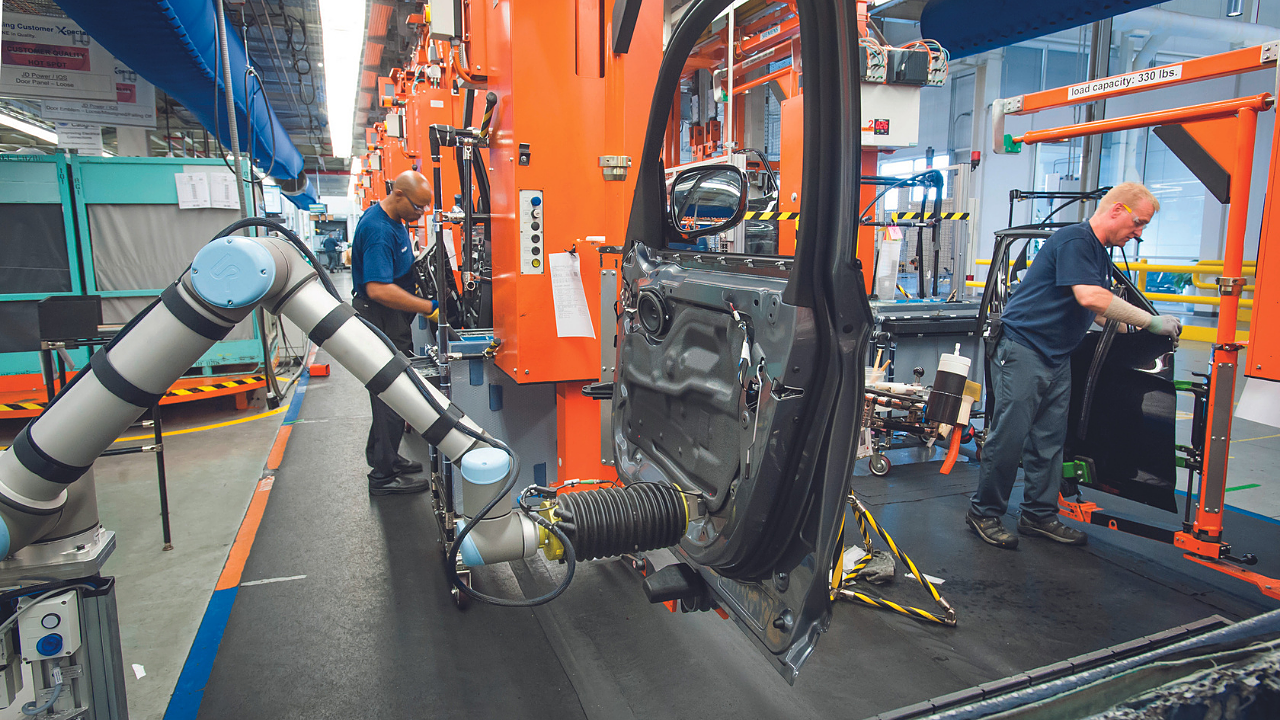
Compared to traditional industrial robotic systems, the high return on investment (ROI) for collaborative robots has paved the way for their growth in recent years, and this drives the growth of the collaborative robot market to reach $ 10.5 billion by 2027 finds MarketsandMarkets.
According to a research report -Collaborative Robot Market with COVID-19 Impact Analysis, component, payload, application, industry and region - Global Forecast to 2027, published by MarketsandMarkets, the market, despite facing headwinds in 2020-21 due to COVID-19, is expected to touch $ 1.2 billion in 2021.
The research firm said that the market is anticipated to grow at a CAGR of 43.4% from 2021 to 2027.
Other drivers fuelling the market include the benefits derived from adopting cobots for businesses of all sizes. For instance, many SMEs and large manufacturers that have deployed collaborative robots benefit from general competitiveness, increased production, and enhanced quality of their products.
Some of the important players in the collaborative robot market include Universal Robots, Fanuc, ABB, Techman, KUKA, Doosan Robotics, Denso, Yaskawa, Precise Automation, Rethink Robotics, MABI Robotic, FrankaEmika, Comau, F&P Robotics, Stäubli, Bosch Rexroth and Productive Robotics.
Cobots with up to five kg payload to hold the largest share
The research firm said that cobots with payload capacity up to five kg are expected to hold the largest share of the collaborative robot market. This is because first-time users prefer low payload capacity cobots, which are cheaper and take up less space than robots with higher payload capacity. In addition, these cobots are often fitted with grippers, reducing the hassle of integration and programming for the end-user. Another benefit of these cobots is that they are easily re-deployable and take up minimal space compared to higher payload cobots. Furthermore, since most of the up to five kg payload capacity cobots are very lightweight, they are inherently safe and do not require force sensors, reducing hardware costs.
Handling application to dominate
The report said that the handling application is expected to hold the largest share of the collaborative robot market in 2021. Handling applications such as material handling, machine tending and bin-picking are currently booming. Handling tasks such as pick and place or palletising are mundane and repetitive for human workers. For example, machine tending requires workers to stand for long hours beside a CNC or injection moulding machine. Collaborative robots can automate a machine tending process during off-hours without any supervision, boosting productivity. Besides, handling application has industry-wide usage in various segments, including automotive, electronics, furniture and equipment manufacturers, which is expected to register a relatively large market share in 2021.
Automotive industry to maintain the largest share
The automotive industry is one of the largest users of collaborative robots since they are used for various applications such as handling, welding, assembling and disassembling, welding, dispensing extensively. Amongst these applications, welding has been one of the first and most popular applications of collaborative robots in the automotive industry. Furthermore, spray painting automation is another popular application in assembly lines, mainly to protect workers from toxic fumes.
Moreover, cobots provide consistency in paint application and minimise wastages. Machine tending and material removal are a few of the other applications where robots are used. As most of the processes involved in automotive manufacturing and assembly are automated, the automotive industry has to employ collaborative robots on a large scale, making it the largest demand generator for the adoption of collaborative robots.
APAC to grow at the fastest rate
The collaborative robot market in APAC is expected to grow at the highest rate during the forecast period due to rising labour costs, especially in the SME industries. These segments embrace industrial adoption by integrating collaborative robots in their manufacturing processes to make the operations more efficient and cost-effective.
China is at the forefront in the adoption of collaborative robots owing to the increasing demand for automation, given the fact that there is a significant growth in its geriatric population in recent years. Besides, China has a significantly strong presence in the automotive and electronic industries. Therefore, these industries are a significant demand generator for the adoption of collaborative robots, the report said.
In addition, China is also aiming to become self-sufficient in the manufacture of collaborative robots. Other APAC countries such as Taiwan and Thailand are also not far behind in adopting automation through the integration of cobots to seek a cost advantage in the wake of rising labour costs. The automotive and electronics industries from the APAC region are the major demand generators for adopting collaborative robots.
Courtesy: MarketsandMarkets. NB: Photo is representational; courtesy: Universal Robot.